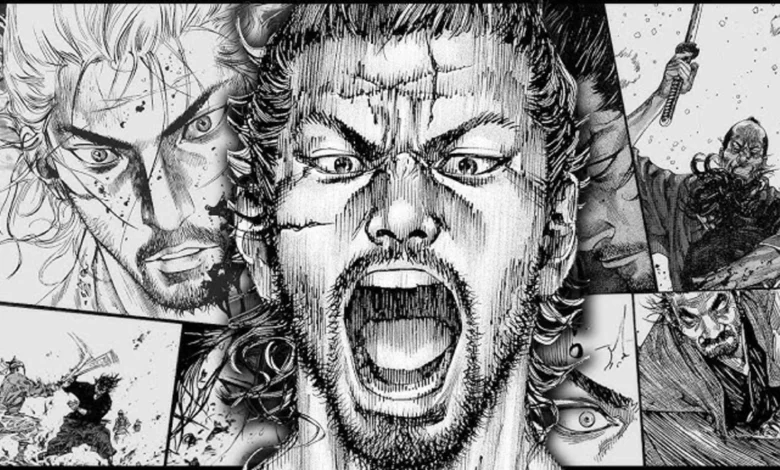Exploring Vagabond Manga: A Masterpiece of Art and Storytelling

Vagabond is not just a manga; it’s a breathtaking journey that combines rich historical narrative with stunning visual artistry. Created by Takehiko Inoue, this manga retells the life of the legendary swordsman Miyamoto Musashi. With its unique blend of philosophy, action, and character development, Vagabond has garnered acclaim and a devoted fanbase. In this article, we’ll dive deep into the world of Vagabond, exploring its themes, characters, art style, and its impact on both manga and the broader culture.
The Origins of Vagabond: A Historical Context
A Journey Through History
Vagabond is based on the novel “Musashi” by Eiji Yoshikawa, which was published in the 1930s. The novel portrays the life of Musashi, a real historical figure known for his unmatched swordsmanship and profound philosophical insights. Set in the early Edo period of Japan, the story navigates the social and political landscape of the time. Inoue takes these historical roots and infuses them with his artistic vision, creating a narrative that feels both authentic and timeless.
The Edo period was marked by peace and stability, but it was also a time of great social change. Samurai were transitioning from warriors to bureaucrats, and the honor and code of the samurai were evolving. Inoue captures this transformation through Musashi’s character, who struggles with his identity and purpose amidst a rapidly changing world.
Inoue’s Vision
Takehiko Inoue, known for his work on Slam Dunk and Real, brings his unique storytelling style to Vagabond. He spent years researching the historical context, martial arts, and philosophies of the time to ensure an accurate portrayal. His dedication to authenticity is evident in the depth of character development and the meticulous detail in the artwork.
Inoue’s approach to storytelling is not just about action; it’s deeply philosophical. He explores themes of self-discovery, the nature of strength, and the essence of being a warrior. This combination of action and introspection sets Vagabond apart from other manga, allowing readers to engage with the material on multiple levels.
Historical Figures and Events
Throughout Vagabond, Inoue weaves in historical figures and events, grounding the narrative in reality. Characters like Sasaki Kojiro, a formidable rival of Musashi, and various historical samurai are brought to life with intricate backstories and motivations. This blending of fiction and history not only enriches the story but also invites readers to learn more about the era.
As readers follow Musashi’s journey, they encounter significant events that shaped Japan’s history. From duels that reflect personal conflicts to larger societal issues, Inoue’s storytelling offers a nuanced view of the time period. This historical context adds layers to the characters’ motivations and the overarching narrative.
The Characters of Vagabond: Depth and Complexity
Miyamoto Musashi: The Reluctant Hero
At the heart of Vagabond is Miyamoto Musashi, whose journey from a brash young warrior to a reflective swordsman is both compelling and relatable. Initially, Musashi is driven by a desire to prove himself and gain fame, embodying the archetype of a wandering swordsman. However, as the story progresses, he confronts deeper questions about life, honor, and what it truly means to be strong.
Musashi’s character development is masterfully portrayed through his interactions with other characters and his internal struggles. He grapples with his own insecurities and fears, making him a multifaceted character. Inoue crafts Musashi’s evolution with care, showcasing his growth from a reckless youth to a wise philosopher.
Sasaki Kojiro: The Perfect Rival
Sasaki Kojiro serves as both a rival and a foil to Musashi. Known for his exceptional skill and calm demeanor, Kojiro represents the pinnacle of martial prowess. However, he is not merely a villain; his character is richly developed, with his own ambitions and philosophical musings.
The relationship between Musashi and Kojiro is central to the narrative, embodying the classic theme of rivalry. Their encounters are intense, not only physically but also mentally and spiritually. Inoue uses these confrontations to explore deeper themes of ambition, fate, and the nature of rivalry itself.
Supporting Characters: A Rich Tapestry
Vagabond is populated by a diverse cast of characters, each adding depth to the story. Figures like Otsu, Musashi’s love interest, and various mentors and comrades serve to illuminate different aspects of Musashi’s character. Otsu, in particular, represents a grounding force in Musashi’s tumultuous life, highlighting themes of love and sacrifice.
The supporting characters are not mere background figures; they each have their own arcs and struggles, contributing to the richness of the narrative. Inoue takes care to flesh out these characters, making them relatable and significant to Musashi’s journey. This interconnectedness creates a vibrant world that feels alive and dynamic.
The Art of Vagabond: A Visual Masterpiece
Inoue’s Unique Style
One of the standout features of Vagabond is its breathtaking artwork. Takehiko Inoue’s artistic style is characterized by detailed line work and dynamic compositions. The fluidity of motion captures the intensity of sword fights, making the action sequences not only thrilling but also visually stunning.
Inoue employs a technique known as “sumi-e,” a traditional Japanese ink painting style. This approach gives Vagabond a unique aesthetic, blending realism with an ethereal quality. The stark contrasts between light and shadow enhance the emotional weight of scenes, drawing readers into the story’s atmosphere.
Expressive Characters
Inoue excels at capturing the nuances of emotion through facial expressions and body language. Characters convey a wide range of feelings, from determination and rage to vulnerability and introspection. This attention to detail enhances character development, allowing readers to connect with their struggles and triumphs on a personal level.
The environments in Vagabond are equally impressive. Inoue meticulously illustrates landscapes that reflect the beauty and harshness of Japan’s terrain. From serene rural settings to bustling towns, the backgrounds contribute to the overall tone of the story, immersing readers in the world of Musashi.
Symbolism and Imagery
Throughout Vagabond, Inoue employs symbolism and visual metaphors to deepen the narrative. The recurring imagery of the cherry blossom, for instance, symbolizes the transient nature of life, echoing Musashi’s own journey of growth and self-discovery. These subtle details add layers to the story, encouraging readers to engage with the themes on a deeper level.
Inoue’s use of visual storytelling techniques—such as panel composition and pacing—further enhances the reading experience. The strategic placement of panels creates a rhythm that mirrors the tension and flow of action scenes, making them more impactful. This mastery of visual language sets Vagabond apart from many other manga.
Themes Explored in Vagabond
The Quest for Identity
At its core, Vagabond is a story about identity. Musashi’s journey reflects the struggle many face in understanding who they are and what they want from life. As he encounters various mentors and adversaries, he learns valuable lessons that shape his sense of self.
Inoue delves into the complexities of identity, emphasizing that it is not a static concept but rather a continuous evolution. Musashi’s experiences force him to confront his past choices and aspirations, making readers reflect on their own journeys of self-discovery.
The Nature of Strength
Vagabond raises profound questions about strength—both physical and emotional. Initially, Musashi equates strength with martial skill and dominance over others. However, as he grows, he begins to understand that true strength lies in self-control, humility, and the ability to confront one’s own fears.
This theme resonates throughout the narrative, challenging the conventional notions of heroism and power. Inoue skillfully illustrates that the strongest warriors are often those who are aware of their vulnerabilities and can navigate the complexities of life with grace.
The Philosophy of War and Peace
The manga also explores the philosophy of war and peace, examining the costs of violence and the search for resolution. Through Musashi’s journey, Inoue contemplates the futility of fighting and the importance of understanding one’s purpose. Musashi’s quest for mastery in swordsmanship is ultimately intertwined with his desire for inner peace.
Inoue does not shy away from depicting the brutality of battle, yet he also emphasizes the possibility of reconciliation and understanding. This nuanced approach invites readers to reflect on the consequences of conflict and the importance of seeking harmony.
The Cultural Impact of Vagabond
Reception and Accolades
Since its debut in 1993, Vagabond has received widespread acclaim, winning several prestigious awards and earning a dedicated fanbase. Critics praise Inoue’s storytelling, character development, and art style, considering Vagabond one of the greatest manga of all time. Its impact transcends borders, resonating with readers around the world.
The series has been adapted into various formats, including an anime and live-action adaptations, further solidifying its place in popular culture. The themes and artistry of Vagabond continue to inspire new generations of creators and fans alike.
Influence on Other Works
Vagabond has had a significant influence on the manga industry and beyond. Many contemporary manga artists cite Inoue’s work as a source of inspiration, particularly in terms of character depth and visual storytelling. The philosophical themes explored in Vagabond have paved the way for more introspective narratives in manga, shifting the focus from mere action to character-driven storytelling.
Additionally, the portrayal of samurai culture in Vagabond has sparked interest in Japanese history and martial arts, encouraging readers to explore these subjects further. The fusion of art and narrative in Vagabond has raised the bar for storytelling in manga, challenging creators to push their boundaries.
you may also read
primebloger.com





